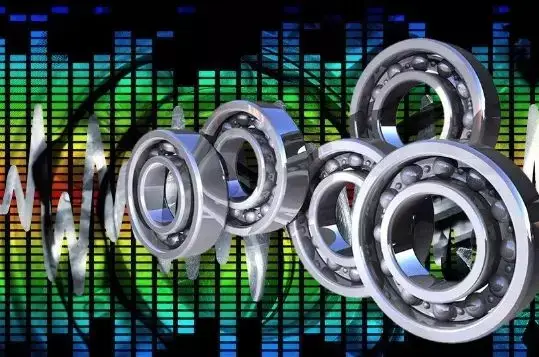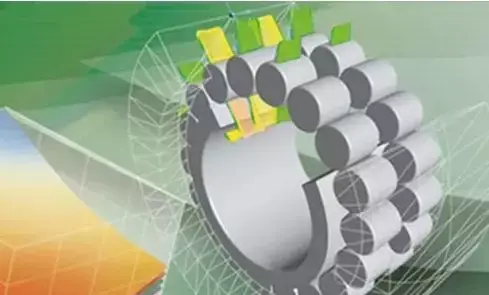[Bearing knowledge] Causes of bearing noise
December 23,2021

Causes of bearing noise
1. Excitation caused by changes in the number of loaded rolling elements
When a radial load is loaded on a certain bearing, the number of rolling elements carrying the load will slightly change during operation, causing the deviation of the load direction.
When a radial load is loaded on a certain bearing, the number of rolling elements carrying the load will slightly change during operation, causing the deviation of the load direction.
2. Partial damage
Due to operation or installation errors, a small part of the bearing raceways and rolling elements may be damaged. During operation, damaged bearing components will produce specific vibration frequencies. Vibration frequency analysis can identify damaged bearing components. This principle has been applied to condition monitoring equipment to monitor bearing damage.
Due to operation or installation errors, a small part of the bearing raceways and rolling elements may be damaged. During operation, damaged bearing components will produce specific vibration frequencies. Vibration frequency analysis can identify damaged bearing components. This principle has been applied to condition monitoring equipment to monitor bearing damage.
3. Accuracy of related parts
In the case of a close fit between the inner and outer rings of the bearing and the bearing seat or the transmission shaft, the inner and outer rings of the bearing may be deformed due to improper fit with the adjacent parts. If it is deformed, vibration and noise may occur during operation.
In the case of a close fit between the inner and outer rings of the bearing and the bearing seat or the transmission shaft, the inner and outer rings of the bearing may be deformed due to improper fit with the adjacent parts. If it is deformed, vibration and noise may occur during operation.
4. Contaminants
If the equipment is operated in a polluted environment, impurities may enter the rolling elements of the bearing and cause vibration. In this case, an annoying noise can usually be heard.
If the equipment is operated in a polluted environment, impurities may enter the rolling elements of the bearing and cause vibration. In this case, an annoying noise can usually be heard.
5. Other
The causes of noise produced by rolling bearings are more complicated. One is the wear of the mating surfaces of the inner and outer rings of the bearing. Due to this wear, the matching relationship between the bearing and the housing, the bearing and the shaft is destroyed, and the axis deviates from the correct position. The shaft produces abnormal noise when it is moving at high speed.
The causes of noise produced by rolling bearings are more complicated. One is the wear of the mating surfaces of the inner and outer rings of the bearing. Due to this wear, the matching relationship between the bearing and the housing, the bearing and the shaft is destroyed, and the axis deviates from the correct position. The shaft produces abnormal noise when it is moving at high speed.

Different bearings have different noise levels
1. The noise of ball bearings is lower than that of roller bearings, and the (friction) noise of relatively sliding bearings is lower than that of relatively sliding bearings; bearings with more balls and thick outer rings have lower noise;
2. The noise of bearings with solid cages is relatively lower than that of bearings with stamped cages;
3. The noise of bearings with plastic cages is lower than that of bearings with the above two cages;
4. High-precision bearings, especially those with higher precision rolling elements, have relatively low noise than low-precision bearings;
5. The noise of small bearings is relatively smaller than that of large bearings.